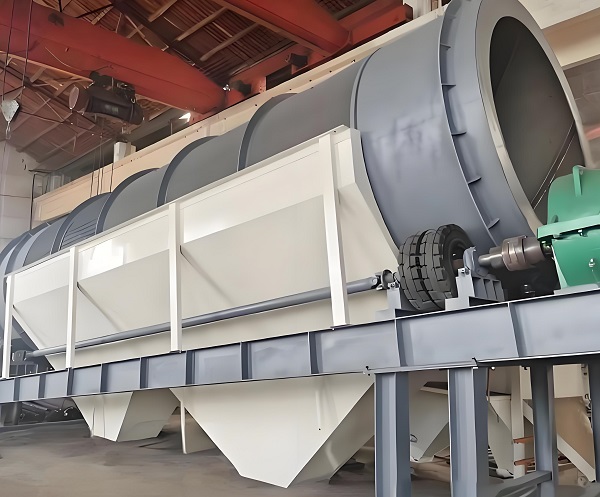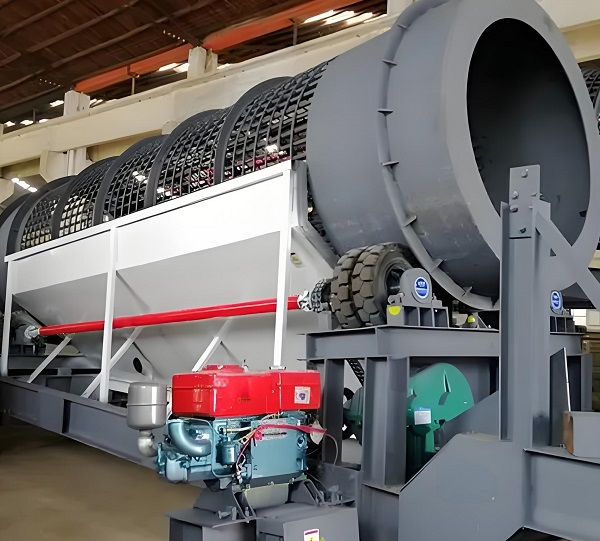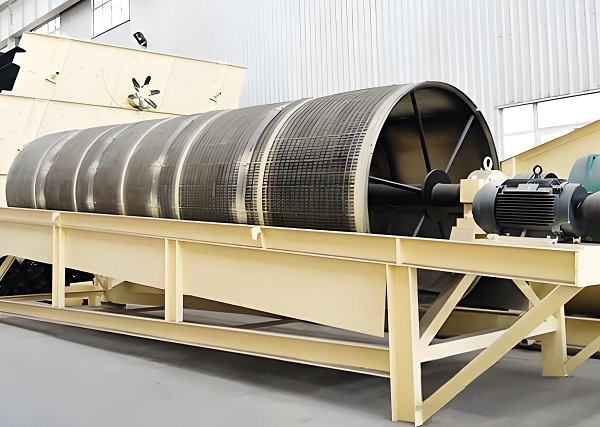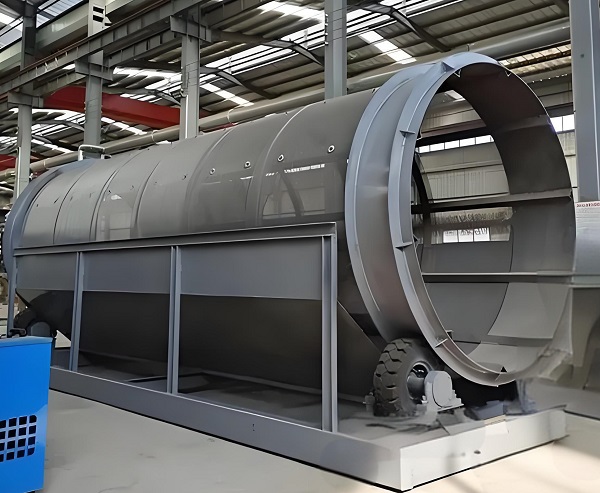As an important screening equipment, Trommel Screen is widely used in various material screening operations. To ensure its efficient and stable operation and extend its service life, special attention should be paid to the following matters during use:

A. Inspection and preparation before operation of Trommel Screen
1. Comprehensive inspection: Check whether the screen mesh is intact, without damage or deformation. Confirm that all fasteners are secure to prevent loosening due to vibration. Check the lubrication system to ensure that all bearings and transmission components are well lubricated and reduce frictional resistance.
2. Supporting design: Based on the actual situation of the site, determine the height of the feeding port and the width of the machine body of the Trommel Screen to ensure that the equipment can be used in conjunction with other equipment and avoid the inability to work properly due to site limitations.
3. Environmental safety: Check for obstacles or unauthorized personnel around the equipment to ensure a safe operating environment.
B. Start and operation of Trommel Screen
1. Startup procedure: Before starting, ensure that the power supply is stable before gradually starting the equipment. After starting, observe the operating status of the equipment to ensure that there are no abnormal sounds, vibrations, or temperature rises. If any abnormality is found in the equipment, it should be stopped immediately for inspection and troubleshooting before continuing to operate.
2. Material feeding control: Reasonably control the amount of material feeding to avoid excessive feeding at once, which may cause screen blockage or excessive motor load. The feeding amount should be adjusted according to the screening capacity of the equipment and actual production needs to achieve the best screening effect.

C. Maintenance and upkeep of Trommel Screen during operation
1. Regular cleaning: During the screening process, impurities or substances may be present in the material, which can easily adhere to the screen and affect the screening effect. Therefore, the sieve should be cleaned regularly to maintain its cleanliness.
2. Lubrication and fastening: Perform maintenance work such as lubrication and fastening on the equipment to ensure its long-term stable operation.
D. Shutdown and inspection of Trommel Screen
1. Shutdown sequence: When the Trommel Screen is stopped, it is necessary to pay attention to the screening of the materials inside the drum before stopping, in order to prevent the motor from being burned out due to excessive load when the Trommel Screen is restarted.
2. Shutdown inspection: After the equipment is shut down, each component should be carefully inspected to ensure that there are no residual materials or impurities. Check whether the fasteners are loose, whether the transmission components are severely worn, etc., and deal with them in a timely manner.

E. Daily maintenance of Trommel Screen
1. Cleaning: Regularly clean the Trommel Screen, especially the sieve holes and mesh parts. When cleaning, be careful not to damage the mesh. It is recommended to use a soft bristled brush or compressed air for cleaning.
2. Lubrication: The operation of the Trommel Screen requires lubrication. It is recommended to use appropriate lubricating oil or grease, regularly check the lubrication condition, and add lubricant.
3. Tightening: Regularly check the fasteners of the Trommel Screen, including bolts, nuts, screens, etc., to ensure their fastening strength and prevent loosening and other malfunctions.
4. Inspection: Regularly inspect the performance of the Trommel Screen, including screening efficiency, motor and electrical aspects, and promptly identify and address any issues.
F. Maintenance of Trommel Screen
1. Disassembly: When conducting major repairs or replacing components, it is necessary to disassemble the Trommel Screen. Before disassembly, the power should be turned off and disconnected.
2. Inspection: After disassembly, inspect all components of the Trommel Screen and repair or replace any problems found.
3. Assembly: After the maintenance or replacement of components is completed, assemble the Trommel Screen according to normal procedures and debug it to ensure its normal operation.
In short, the daily maintenance and repair of the Trommel Screen are crucial for its smooth operation and extended service life. Users should perform maintenance and repair operations according to their requirements when using the Trommel Screen, and regularly inspect it to ensure its performance and safe operation.

G. Precautions for using Trommel Screen
In order to improve screening efficiency, the speed of garbage moving inside the Trommel Screen should not be too fast, otherwise it will cause insufficient and incomplete screening. Therefore, Trommel Screens generally have strict installation angles, usually 5 °, which can be adjusted according to actual needs.
The drum device is installed obliquely on the frame. The electric motor is connected to the drum device through a coupling via a reducer, driving the drum device to rotate around its axis. After the material enters the drum device, due to the tilt and rotation of the drum device, the material on the screen surface flips and rolls, causing qualified materials (undersized products) to be discharged through the discharge port at the bottom of the rear end of the drum, and unqualified materials (undersized products) to be discharged through the discharge port at the tail end of the drum. Due to the flipping and rolling of materials inside the drum, materials stuck in the sieve holes can be ejected to prevent blockage of the sieve holes.
H. Safety protection and recording of Trommel Screen
1. Safety protection: During use, attention should be paid to safety protection, and the protective covers, safety nets, and other safety protection devices of the equipment should be checked regularly to ensure that they are intact and undamaged. Set up warning signs around the equipment to prevent personnel from entering dangerous areas by mistake.
2. Recording and feedback: Record the usage and maintenance of the equipment, providing reference for subsequent repairs and improvements. If any abnormalities or malfunctions are found in the equipment, they should be promptly reported to the relevant departments or manufacturers for timely handling.
Technical Parameter
| Specification | Roller size (mm) | Output (t/h) | Speed (r/min) | Motor | Dimensions (mm) | ||
|---|---|---|---|---|---|---|---|
| Diameter | Length | Model | Power (kW) | ||||
| GS10×30 | φ1000 | 3000 | 1~3 | 22 | YE2-132M1-6 | 4 | 3500×1400×2000 |
| GS12×45 | φ1200 | 4500 | 3~5 | 16.6 | YE2-132M2-6 | 5.5 | 5700×1600×2400 |
| GS15×50 | φ1500 | 5000 | 5~7 | 16 | YE2-160L-6 | 11 | 6860×1900×2810 |
| GS15×65 | φ1500 | 6500 | 16 ~ 24 | 9.98 | YE2-160L-6 | 11 | 8360×1900×2810 |
| GS16×60 | φ1600 | 6000 | 16 ~ 24 | 10 | YE2-180L-6 | 15 | 7300×2000×3000 |
| GS18×65 | φ1800 | 6500 | 50 ~ 70 | 13.6 | YE2-200L1-6 | 18.5 | 9000×2200×3200 |
| GS20×70 | φ2000 | 7000 | 50 ~ 70 | 11.6 | YE2-225M-6 | 30 | 10234×2430×5800 |
| GS25×110 | φ2500 | 11000 | 50 ~ 70 | 16 | YVFE2-280M-6 | 55 | 13830×3000×3854 |
In summary, during the use of the Trommel Screen, attention should be paid to equipment inspection, supporting design, start-up observation, feeding control, regular cleaning and maintenance, and safety protection. Only by doing these tasks well can we ensure the normal operation of the Trommel Screen, extend its service life, and achieve efficient screening effect.
Save Time! Get A Detailed Quotation Quickly.
